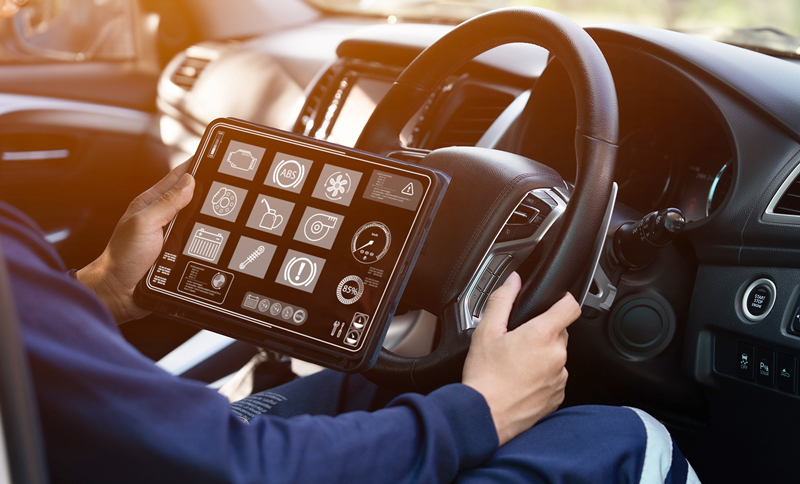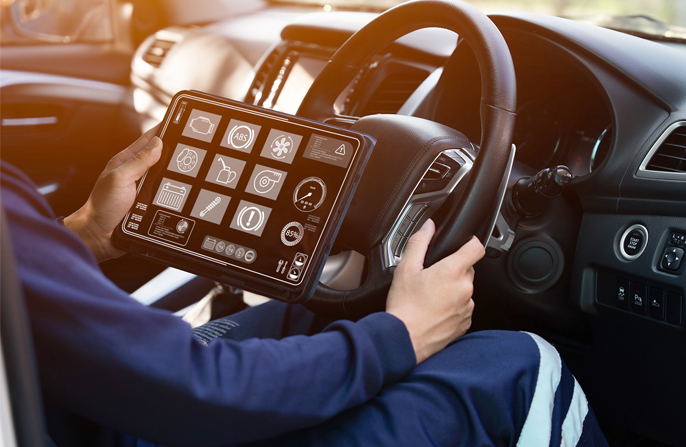
BY TOM HOLDEN
Editor’s note: In a previous article (July 2025), author Tom Holden made the case for why pre- and post-inspections are vital to a company’s bottom line. In this article, Holden explored how a simple walkaround by your team can help protect your company from “nuclear verdicts” in the event of an accident. While much of the article is based on FMCSA maintenance schedules and regulations, the same can apply to your non-commercial vehicle fleet.
A brake hose does not know—or care—whether its carrier has razor-thin margins or double-digit profits. It fails the same way. What differs is the cost of that failure after it happens. When done with discipline, inspections convert random failure cost into planned maintenance cost and courtroom risk into documented diligence. But it’s not just about the maintenance and repair dollars. Insurance and premiums are on the minds of most operators today with costs skyrocketing and verdicts in dollar amounts we haven’t seen before. You can be sure that if an accident occurs, inspection reports and maintenance records are going to be scrutinized.
Hard Economics: The Three Big Profit Centers
| Profit Lever | How Inspections Unlock It | Typical Annual Impact |
| Up-time | Catch defects in the yard before they strand passengers | 1.5-2 unscheduled repairs per vehicle avoided ($3,000) each |
| Fuel & tires | Correct inflation improves mpg 0.5-1.5%; stops irregular wear | $1,200-$2,500 per power unit |
| Insurance & verdicts | Complete DVIR trail cuts negligence claims, improves CSA scores | Possible 5-10% premium reduction after two clean policy years |
Case Law Snapshots
Consider the difference between these two cases—which came down to how records were kept, and inspections and repairs were made a priority.
Johnson v. ABC Logistics (2023): Jury awarded $12.4 million after a box truck veered off an overpass due to a steer tire recap failure. Plaintiff attorneys showed the DVIRs were missing for three of the five days preceding the crash.
Martínez Transport v. FMCSA (2024): Carrier’s petition for review granted in part because DVIRs and repair orders demonstrated “robust preventive maintenance,” reducing the civil penalty from $31,000 to $7,500.
These real-world outcomes reinforce a core principle: Inspections cannot stop every crash, but they can prevent many and help defend the rest.
Regulatory and Legal Pillars
The FMCSA Safety Measurement System (SMS) assigns the Vehicle Maintenance BASIC a three-point double weight for violations that place a vehicle out of service. Miss enough pre-trip defects, and the BASIC percentile climbs into the intervention zone, triggering warning letters, audits, and potentially a compliance review that can revoke operating authority.
Civil litigation is more brutal. In 2022, the average jury verdict against carriers in fatal crashes exceeded $7 million. Attorneys ask for the DVIR first. If it is missing, illegible, or signed before the inspection time stamp, the plaintiff’s narrative writes itself: the company chose profits over people. Conversely, documented inspections and repair orders are strong evidence of reasonable care, a key defense threshold in negligence law.
 Technology Integration
Technology Integration
Electronic DVIRs (e-DVIRs) are no longer optional for large fleets. Beyond the paper-saving rhetoric, they deliver three concrete advantages:
1. Timestamp integrity: Prevents “pencil-whipping” yesterday’s inspection after today’s crash.
2. Photo evidence: Drivers attach images of cracked rims or leaking hubs, so mechanics know exactly what to bring to the bay.
3. Data mining: Safety managers can spot systemic issues (e.g., one vehicle model whose air tanks rust out two years early).
Predictive analytics extend this value further. By correlating slow tire leaks with wheel end temperatures, algorithms can forecast a likely wheel seal failure as much as two weeks before it strands your tour group on the way to a fun afternoon out. Fleets using such systems report up to 60 percent reductions in catastrophic wheel-end fires—often triggered by a dragging brake and ending with a hazmat call.
Culture: The Invisible Multiplier
Regulation coerces behavior; culture inspires it. Fleets that outperform peers treat inspections as craft skill, celebrated and coached like backing maneuvers or defensive driving. Key ingredients:
Hands-on training: A cutaway tire or cracked brake drum in the classroom turns abstraction into memory
Tool availability: Air hoses and calibrated gauges at every outbound gate; LED flashlights issued during orientation
Real-time feedback: E-DVIR platforms that prevent dispatch until yesterday’s defects show “repaired” in the system
Recognition: Try monthly shout-outs or even small bonuses for long streaks of defect-free reports
Future-Proofing Your Program
There are myriad options to help prevent and possibly predict a potential hazard before it turns into a breakdown or worse.
Adopt sensor rich tires as prices fall: Data will soon feed directly into DVIR platforms.
Integrate maintenance and dispatch dashboards so that “red flag” equipment can’t be assigned a load.
Leverage AI video analytics: Cameras can now detect low tires as vehicles exit the gate by comparing sidewall height to baseline.
Stay ahead of regulation: NHTSA is studying heavy vehicle automatic emergency braking, and tire pressure monitoring mandates for CMVs are likely coming soon.
Final Word: Control the Controllables
Trips will vary. Fuel prices will swing. But whether the machine beneath your driver holds together until they return to the yard should never be a gamble. Pre-trip and post-trip inspections attack that risk at its source. They are short, repeatable, teachable, and—most importantly, effective.
When tires rank just behind brakes as the top reason inspectors sideline a commercial vehicle, the path forward is clear: inspect, repair, document, repeat. Do that relentlessly and you’ll find that safety and profit ride on the same set of wheels, year after year.
From the simple walkarounds that anchor safe operations, to the high-stakes importance of tire integrity, to the broader business case for proactive maintenance culture, one truth emerges: inspections are not just regulatory checkboxes, they are strategic tools. Fleets that treat them as such see fewer breakdowns, stronger legal defenses, and healthier bottom lines. In an industry where margins are tight and risks are high, the smartest move remains the simplest. Inspect with intent, act on what you find, and build a culture that values diligence over delay. [CD0825]
Thomas Holden is the owner and ceo of Transportation Advisors and EZ-DrugTest. He can be reached at




